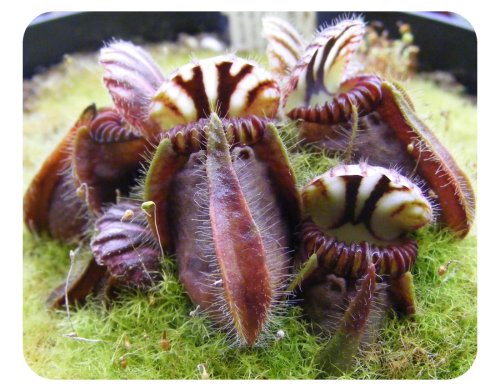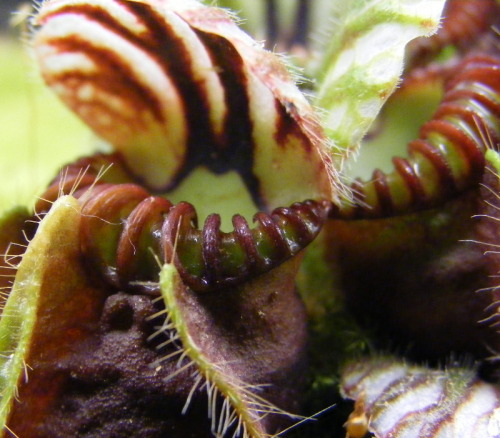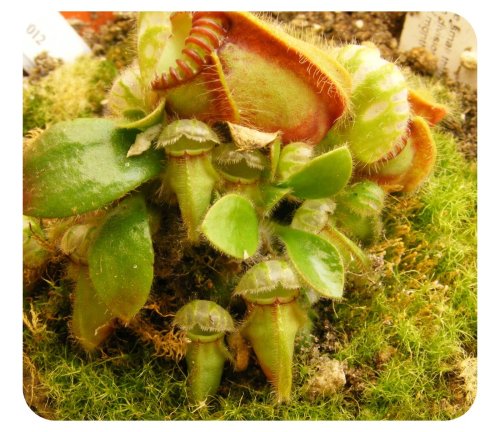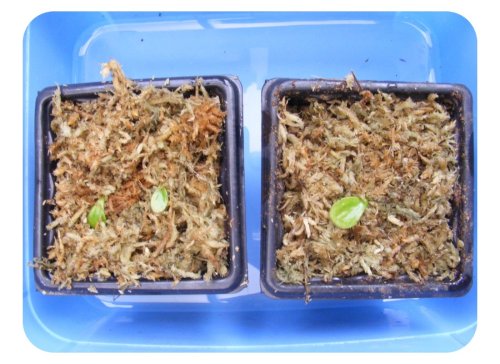Materials required:
- An adult plant producing non-carnivorous leaves
- Fresh sphagnum moss
- Carnivorous plant compost (for potting on young plantlets)
- Tweezers and a scalpel (or fine scissors)
- Cling film or a propagator unit
Cephalotus follicularis is commonly known as the Western Australian Pitcher Plant or Albany Pitcher plant. It is a small, low-growing carnivorous plant generally found in damp peaty sands by streams or coastal creeks in Australia.
Cephalotus follicularis is one of the most desired carnivorous plants so if you are able to propagate it, normally there will be plenty of interest from people wishing to acquire it from you.


Taking leaf cuttings from The Albany Pitcher plant (Cephalotus follicularis) is really rewarding, and can provide you with backup plants in case you experience any losses. Always choose material from healthy, adult plants that have no signs of disease or stress. Avoid any leaves which are old, damaged or diseased. Leaf cuttings are much more likely to succeed from the non-carnivorous leaves, rather than the pitchers. While taking cuttings it is a good idea to trim away any old leaves or pitchers with fine scissors or a scalpel.
This adult Cephalotus follicularis plant had produced a good number of non-carnivorous leaves so I decided to take 3 leaf cuttings.

The process of taking Cephalotus leaf cuttings is not particularly difficult although it does require a careful touch. When you take the leaf cutting, it is essential that the whole leaf comes away cleanly. If the top part of the leaf blade comes away, leaving the leaf-stalk still attached, it is unlikely to produce a new plant.
I carefully pulled the leaves from the rhizome, ensuring the pale area at the base of the leaf was intact. To reduce the chance of breaking the leaf in the wrong place, trace the stalk down to the point where it is attached to the rhizome. Grip the stalk gently but firmly, as low down as possible, and pull it away from the plant with a slight downwards tug. This is the most difficult part of the process, and it can take a couple of attempts before you feel confident. A pair of tweezers may help with this part of the procedure.
If all has gone well you should now have a healthy green leaf that still has the pale area at the base of the leaf-stalk intact. If the leaf cutting is successful, it is from this pale area at the leaf base that a new plant will develop.
Cephalotus follicularis cuttings: step by step
These are the steps I followed when taking leaf cuttings from the mature Cephalotus plant pictured above.
I placed the cuttings on broken long-fibre fresh sphagnum, and then placed a tiny amount of moss over the base of the leaf. Next, I gently firmed the moss to ensure close contact with the leaf surface. I placed the pots of cuttings in a tray of shallow rainwater, covered with clingfilm to preserve humidity.

My success rate with Cephalotus follicularis leaf cuttings has been generally around 50% – 75%. New growth normally takes around a couple of months, or longer, to appear above the moss so you need to be patient!
Once the new growth is visible, ensure you keep the moss damp at all times and never let it dry out. The young plants will be slow growers, and the first pitchers that are produced will be tiny.
You can leave the young plants undisturbed for at least a year before you transplant them to new pots in a compost mix of moss peat, sand and perlite or use a ready mixed carnivorous plant compost. Give your plants as much light as possible, and keep above 5 Celsius in winter. It is very important that you do not let the plants become too dry during the early phases of growth as their root systems will be very small and unable to tolerate lack of moisture.
Some helpful resources
- Growing Cephalotus – a guide at the International Carnivorous Plant Society
- Read about Cephalotus follicularis on the CPUK Forum
- Australian Carnivorous Plants by Greg Bourke & Richard Nunn – purchase now